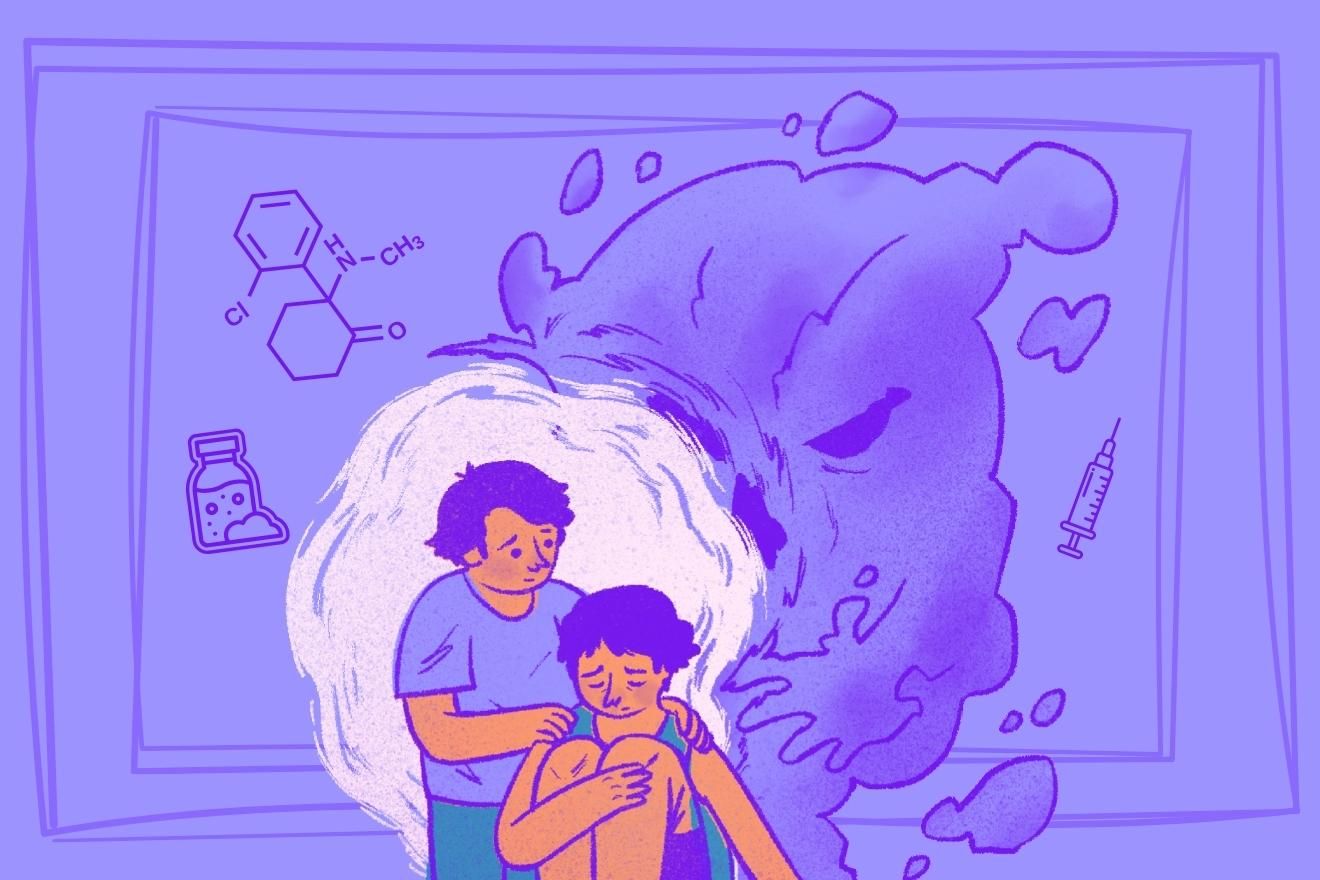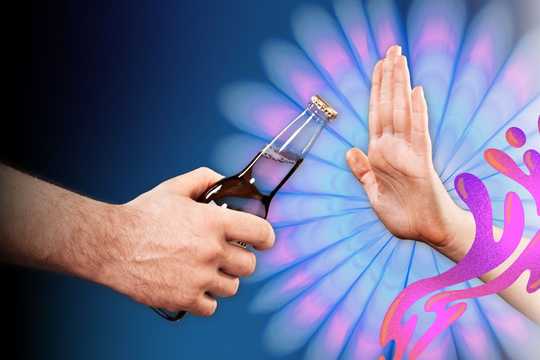Ketamine holds great potential in alleviating various forms of emotional distress. It is now used to treat anxiety, PTSD, treatment-resistant depression, and various addictions. But there is perhaps an unfortunate irony regarding this last problem: addiction. This is because ketamine itself has an addictive potential, which has been receiving greater attention as ketamine therapy becomes more widespread.
Anyone considering this specific psychedelic-assisted therapy should keep in mind that its ketamine’s addictive potential is higher than that of the classic psychedelics. If you have struggled, or currently struggle, with substance or behavioral addiction, then you should weigh up the benefits and risks of pursuing ketamine therapy. Researchers are increasingly drawing attention to the possibility of addiction developing following this treatment [1].
“Ketamine dependence can result from the desire to turn this “adventure holiday” into a lifestyle.”
—Dr. Karl Jansen
In this article, we will be exploring the current discourse around ketamine’s addictive potential. This will include a discussion of why people become addicted to ketamine.
In What Sense Can Ketamine Be Addictive?
Physical Dependence
Any drug that can induce a positive change of mind can have the potential to be addictive. But this doesn’t mean all substances have equal addictive potential. For example, some drugs – such as opioids and stimulants – can create physical dependence. This is when continually taking the drug leads to tolerance (so you need higher doses to achieve the desired effect). It also involves unpleasant physical withdrawal symptoms when you stop using or use lower doses.
Many opioids and stimulants are associated with moderate to high physical dependence. These would include heroin, cocaine, nicotine, and methamphetamine. Ketamine, in contrast, is associated with low to moderate physical dependence. Tolerance to the drug does develop as a result of heavy or regular use. Some withdrawal symptoms may also present themselves upon cessation of use. However, the risk of physical dependence is not as high as other drugs commonly linked to addiction.
Physical dependence is not the same as addiction [2]. The former refers to the body becoming used to the presence of a chemical and is characterized by increased tolerance and withdrawal. Many medications lead to physical dependence, however. This effect does not necessarily indicate addiction. Moreover, not all physical dependence is associated with continued use due to pleasurable or euphoric effects. Drug addiction, in contrast, is defined as continuing to use a drug despite its negative effects.
Psychological Dependence
Ketamine can also lead to psychological dependence. This develops from regular and frequent use of the drug. If physical dependence refers to the body depending on the drug, then psychological dependence refers to the mind becoming dependent on it. Furthermore, the former is associated with physical withdrawal symptoms, while the latter is defined in terms of psychological withdrawal symptoms.
Ketamine can cause psychological dependence because users can crave its effects and struggle to focus their minds on anything else [3]. Upon cessation of use, psychological withdrawals can feature strong cravings, as well as anxiety, depression, and insomnia. As with physical dependence, psychological dependence is not the same as addiction.
Ketamine’s Addictive Potential Is Related to Physical and Psychological Dependence
Physical and psychological dependence are often related to addiction. For example, ketamine can induce euphoria and dissociation. These can be ways of mentally coping with difficult emotions and life experiences. When used as a form of regular (or perhaps daily) self-medication, physical tolerance then develops. To access those pleasant states of mind, higher doses are then required. Cessation of use can lead to negative physical and psychological effects. So use has to be maintained.
Learn about the Safety and Pitfalls of Ketamine Therapy With These Resources
- Simple Ways to Get the Most Out of Every Ketamine Treatment and Improve Its Mileage: Read More.
- Ketamine Has Benefits but Is Not a Miracle Drug. Learn Potential Risks and Manage Expectations.
- Ketamine Treatment, Now Available to Improve Mental Health. Read Our Extensive Ketamine Guide.
- What I Wish I’d Known Before Ketamine Therapy: Olivia Clear, APCC, Helps You Prepare.
However, addiction develops when one continues to regularly use ketamine despite its negative (physical and/or psychological) effects.
Why Ketamine is More Addictive Than Classic Psychedelics
There is ongoing debate in psychedelic circles as to whether ketamine should be considered a psychedelic. Many think of it as a non-classic psychedelic, whereas others might refer to it as psychedelic-like. Its mechanism of action does differ from classic psychedelics. It binds to glutamate receptors as opposed to serotonin receptors. Based on its pharmacology, it is classified as a dissociative substance.
But it is not necessarily ketamine’s chemical mechanism of action that makes it more addictive than classic psychedelics. (Classic psychedelics are generally thought to carry a very low risk of addiction, although it is possible for a small minority of users to habitually use them, despite negative effects [4].) Salvia, a psychedelic plant that acts on kappa opioid receptors rather than serotonin receptors, is not typically associated with addiction.
So what is it about ketamine’s addictive potential that makes this substance a higher risk for addiction than classic psychedelics and, say, a non-classic psychedelic like salvia?
Is Duration Relevant?
One reason why it’s difficult to develop an addiction to many classic psychedelics is that the effects last several hours. Most people might feel physically and mentally fatigued after tripping all day. These experiences can also be psychologically taxing. In general, these are not experiences that most people want to have frequently. It is true that some users binge on these experiences during the initial ‘honeymoon period’. But this does not generally develop into what we think of as addiction.
However, psychedelics like DMT, 5-MeO-DMT, and salvia have a shorter duration of effects than ketamine. Perhaps, then, the quality of the experience makes a difference.
Ketamine’s Subjective Effects
Ketamine’s effects can be intense, especially when one enters the ‘k-hole’ (a state of detachment from one’s body and surroundings). However, the ketamine experience does not tend to be intense in the way that DMT, 5-MeO-DMT, or salvia experiences are. It is rarer for psychedelic users to engage in daily use of the latter compounds.
In Ketamine: Dreams and Realities (2001), Dr. Karl Jansen describes ketamine’s addictive potential in terms of escapism:
“Ketamine can provide a dramatic break from the pains and problems of the everyday world. There are few drugs offering such a complete escape without actual loss of consciousness. It may appear to take the user out of the body, the room, the house, the city, and often right off the planet and into another universe altogether. It may even appear to take the user beyond life, through the Valley of Death, and out the other side again. Ketamine dependence can result from the desire to turn this “adventure holiday” into a lifestyle.”
Of course, other psychedelics can be used in an escapist way. But it seems it is easier to do this with ketamine. It doesn’t seem to induce as strong an ‘ontological shock’ as DMT and 5-MeO-DMT do. It also tends to produce more pleasant experiences than salvia. Many heavy ketamine users may find they can easily re-integrate into reality after their strong dissociative experiences. In contrast, heavy and regular use of classic psychedelics seems more likely to lead to destabilization and extended difficulties.
The Negative Effects of Ketamine Addiction
When people rely on ketamine as a form of escapism or emotional pain relief, this can lead to physical harm. Heavy, regular, and long-term ketamine use can cause ketamine bladder syndrome (or ketamine cystitis) [5]. This involves damage to the cells of the bladder lining. These cells are designed to contain the urine. If they become too damaged, urine can seep through, reaching the inner layers of the bladder, causing deeper damage and a range of symptoms.
Symptoms of ketamine bladder syndrome may include:
- More frequent urination
- Needing to urinate more urgently (despite the bladder not being full)
- Incontinence (urine leaking out when you don’t want it to)
- Blood in the urine
- Shrinkage of the bladder capacity
- Erectile dysfunction
- Pelvic pain or pressure
Follow your Curiosity
Sign up to receive our free psychedelic courses, 45 page eBook, and special offers delivered to your inbox.If the damage becomes too severe, then ketamine cystitis can be debilitating and permanent. This means the bladder is unable to repair itself. Nonetheless, in the early stages, abstinence typically resolves or significantly reduces the symptoms.
Is Addiction a Risk of Ketamine Therapy?
The potential risks of ketamine therapy were heightened following the death of actor Matthew Perry. The star of the TV sitcom Friends was undergoing ketamine infusion therapy for depression and anxiety every other day but had reduced his intake before his death. His last known infusion was a week and a half before he passed away. However, the level of ketamine found in his blood was about the same quantity as would be used for general anesthesia.
Sub-anesthetic doses are used in ketamine infusion therapy (for mental health issues). The high quantity of ketamine found in Perry’s system, therefore, indicates he was using ketamine outside the context of treatment. It is believed he took far too high an oral dose of ketamine, causing him to lose consciousness. Other contributing factors in his death included drowning (which can happen in a dissociated state), coronary artery disease, and the effects of buprenorphine.
Regular ketamine infusion therapy, even though it’s supervised, can carry an addictive potential. This risk is heightened when the person receiving the treatment has a history of alcohol and/or drug addiction, as Perry did. There is a risk that someone with (or without) a history of addiction will want to keep using ketamine when the round of ketamine infusions is complete. This is why it’s crucial for both ketamine therapists and clients to keep communication channels open before, during, and after treatment. This will ensure that the risks can be adequately assessed and any initial signs of addiction can be quickly addressed.
References
- Strong, C.E. and Kabbaj, M. (2018). On the safety of repeated ketamine infusions for the treatment of depression: Effects of sex and developmental periods. Neurobiology of Stress, 9, 166–175. https://www.sciencedirect.com/science/article/pii/S2352289518300195
- Horowitz, M. A., & Taylor, D. (2023). Addiction and physical dependence are not the same thing. The Lancet Psychiatry, 10(8), e23. https://www.thelancet.com/journals/lanpsy/article/PIIS2215-0366(23)00230-4/fulltext
- Le, T. T., Cordero, I. P., Jawad, M. Y., Swainson, J., Di Vincenzo, J. D., Jaberi, S., … & McIntyre, R. S. (2022). The abuse liability of ketamine: a scoping review of preclinical and clinical studies. Journal of psychiatric research, 151, 476-496. https://www.sciencedirect.com/science/article/abs/pii/S0022395622002394
- Calderon, S. N., Bonson, K. R., Reissig, C. J., Lloyd, J. M., Galati, S., & Chiapperino, D. (2023). Considerations in assessing the abuse potential of psychedelics during drug development. Neuropharmacology, 224, 109352. https://www.sciencedirect.com/science/article/pii/S0028390822004117
- Jalil, R., & Gupta, S. (2012). Illicit ketamine and its bladder consequences: is it irreversible?. Case Reports, 2012, bcr2012007244. https://casereports.bmj.com/content/2012/bcr-2012-007244.short






